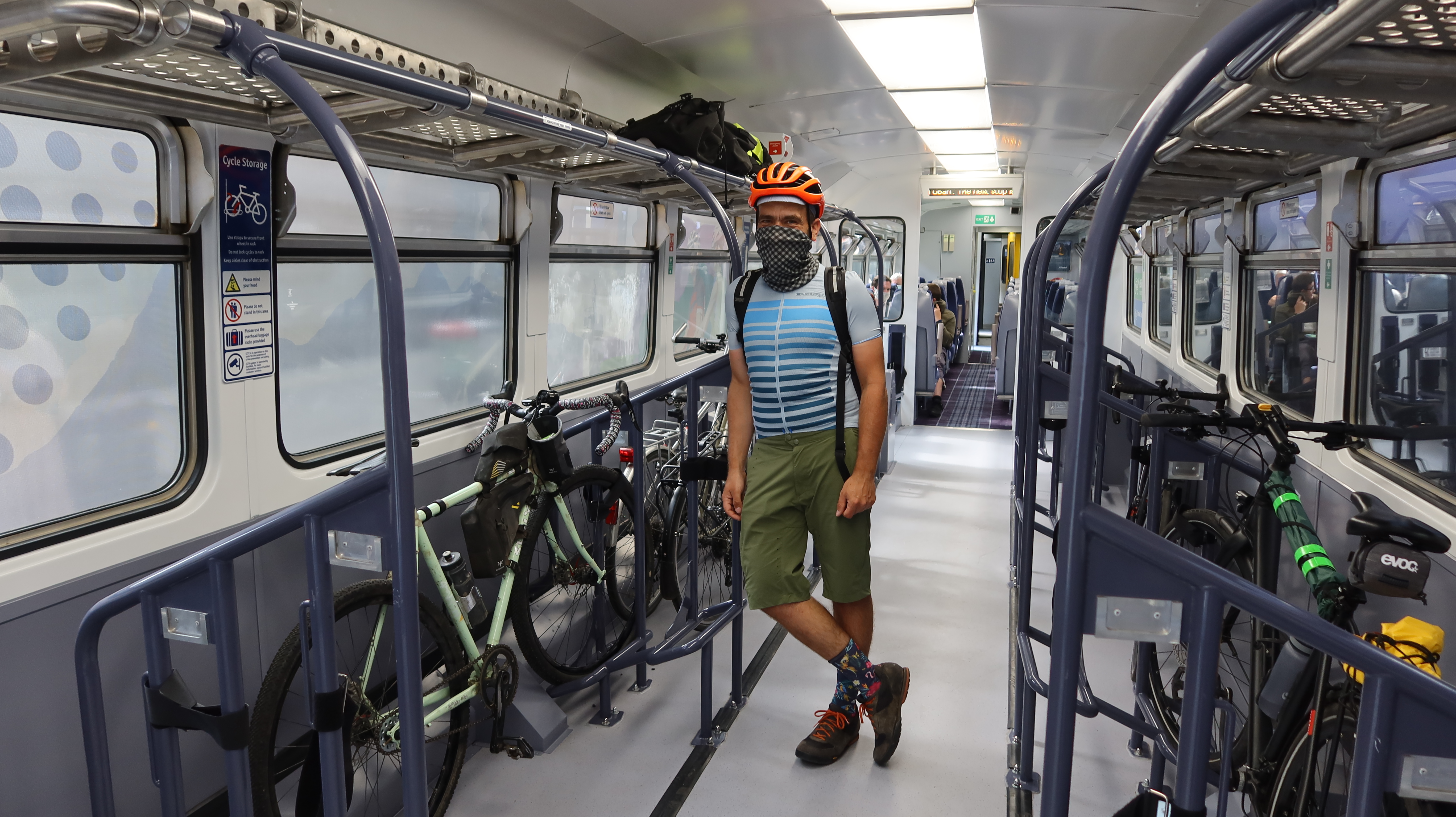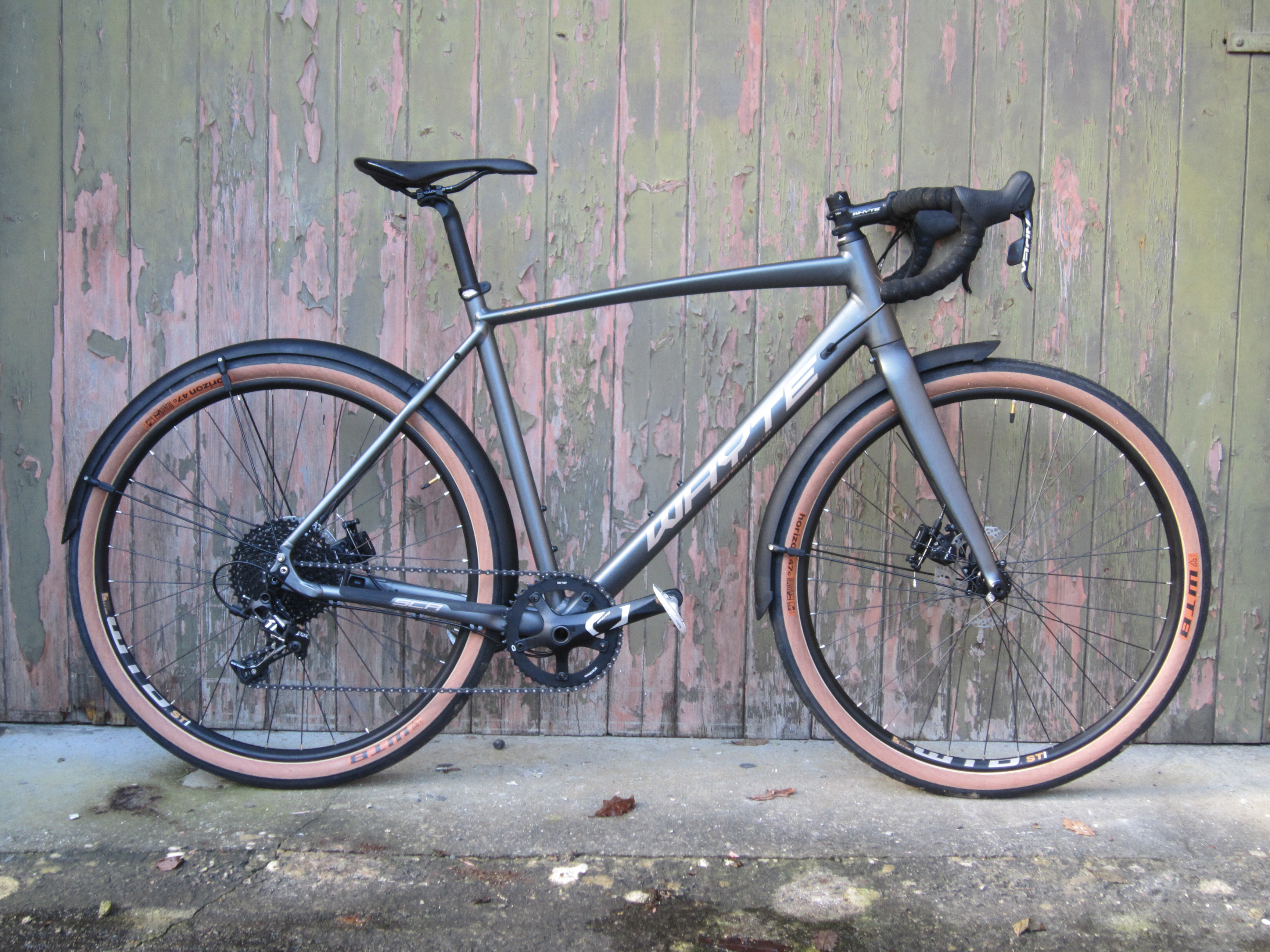Bike test: Gravel bikes
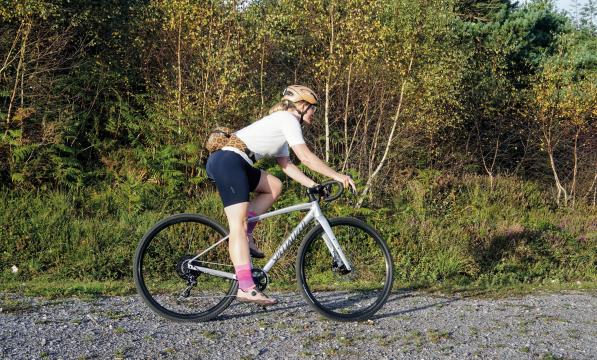
Entry-level gravel bikes from big-name brands tend to cost between £1,000 and £1,500. Spending £1,000 more buys you a lighter-weight, bikepacking-ready bike with significant upgrades.
Instead of mechanical disc brakes you can expect hydraulics. The groupset will be higher tier. Wheels and tyres are more likely to be tubeless ready.
You may also get technology that doesn’t appear on less expensive gravel bikes, such as the dropper seatpost of the Whyte Friston or the proprietary fork-steerer suspension that the Specialized Diverge Comp E5 has.
‘Gravel’ is a broad category. At one end of the spectrum are fatter-tyred adventure bikes (cyclinguk.org/adventure-bikes) that will tackle the kind of terrain you'd otherwise use a hardtail mountain bike for. At the other end are all-roads bikes that are better suited to tarmac and the sort of unsurfaced tracks that a car would cope with.
Our test bikes have significant differences in scope. The one that appeals to you most may depend on your cycling background. Are you coming to the world of drop-bar, off-road riding from the discipline of road cycling or mountain biking?
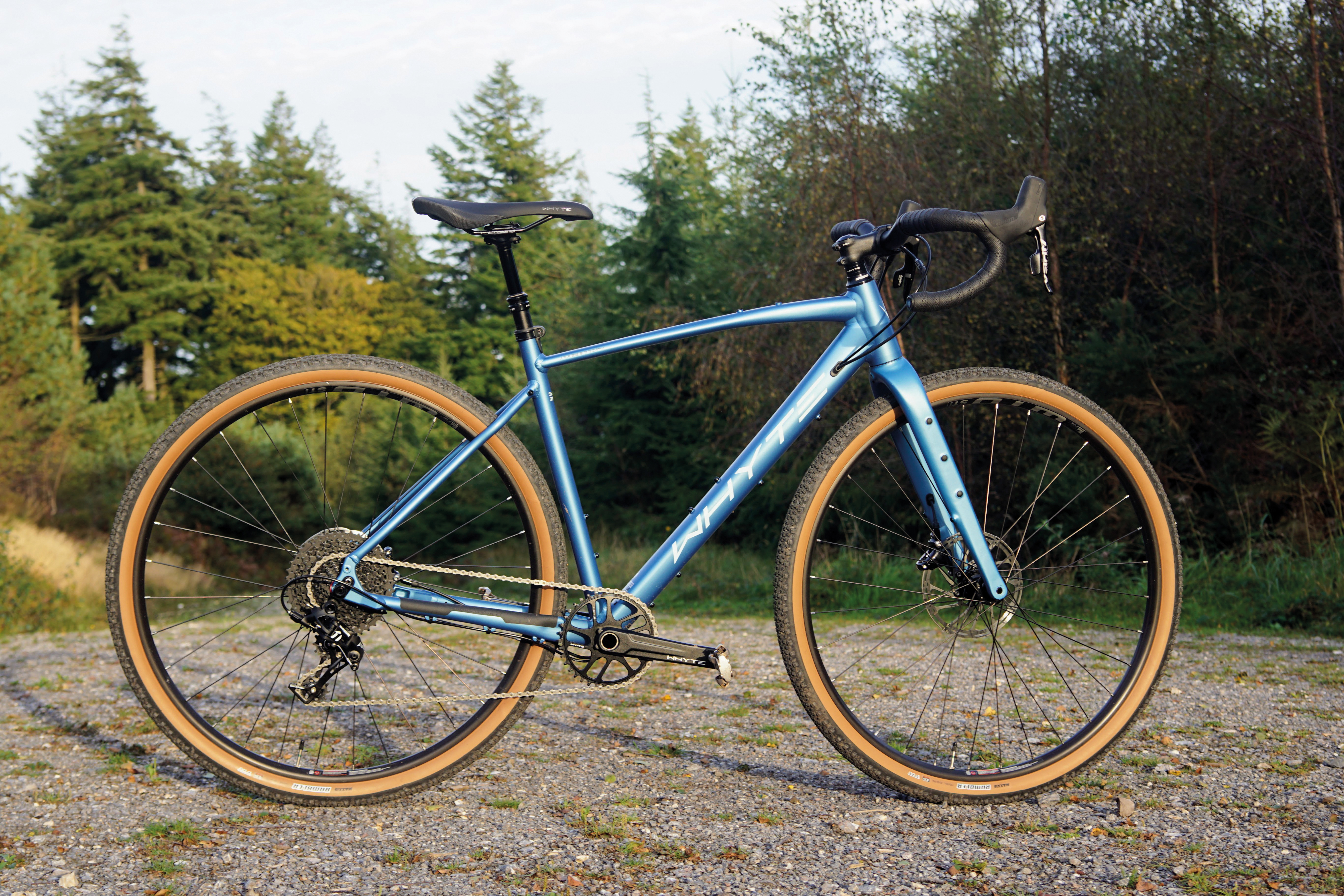
Frame and fork
Both the Specialized Diverge and Whyte Friston have aluminium gravel frames, paired with carbon forks and compatible with modern 12mm thru-axles and threaded bottom brackets.
Built for adventure, both bikes’ forks feature cargo cage mounts. The Friston frameset is 1×-specific. While the Diverge is also built with a single chainring setup, you can opt to run a double chainring on it.
The two bikes share some similar geometry figures, with 70.5- (Specialized) and 70-degree (Whyte) head tube angles, and almost identical wheelbases. The head tube is considerably longer (130mm) on the Whyte Friston than the Specialized Diverge (104mm).
The Diverge is built with Specialized’s Future Shock 1.5 suspension, giving 20mm of fork steerer travel. An internal spring enables the handlebar (and stem) to move up and down, giving much the same effect as a suspension stem; it’s not like a conventional suspension fork, or even Cannondale’s Headshok, where the suspension is for the front wheel.
The Future Shock is designed to smooth out bumps in your ride rather than take big hits or track rough trail surfaces like a mountain bike fork. The Diverge comes with a choice of four coil springs so you can adjust how supple or firm it feels.

The Friston takes a more traditional approach to frame design, though with some cues from the mountain bike world. Like contemporary MTBs, the Friston aims for improved off-road stability with a shorter-offset fork (more trail), a longer-reach frame that puts the front wheel further out front, and a shorter stem.
Generous tyre clearances enable you to run wider 700C rubber for rougher trails. While the Specialized can take up to 42mm tyres, the Friston can accommodate tyres up to 50mm (2in).
Both bikes feature internal cable and hose routing, although only through the frame and fork, and not, home mechanics will be pleased to note, through the handlebar, stem and/or headset.
Components
Both bikes are equipped with SRAM Apex, with single-chainring drivetrains and hydraulic disc brakes, though neither has a full series build. The Friston and Diverge each have a (heavier) Sunrace cassette, presumably as a cost saving, and the Diverge also uses a KMC chain and Avid G2 rotors.
The Friston has a non-series chainset: an alloy own-brand offering with a 38-tooth chainring that’s slightly smaller than the Diverge’s 40-tooth one.
As you’d expect at this price, the finishing kit is all alloy and designed in house. The Diverge uses Specialized’s Adventure Gear Hover handlebar with a subtle 12-degree flare in the drops, a Future-Shock-specific stem and a standard seatpost topped with the popular short-nosed Specialized Power cutout saddle.

The Friston has some obvious mountain bike influences when it comes to components, including a very wide handlebar (50cm!) and a Trans-X dropper seatpost with 70mm travel. This is activated using the left-hand SRAM shifter that would otherwise operate a front derailleur.
Both bikes roll on 700C alloy wheelsets, set up with innertubes. The major difference, apart from the tyres themselves, is that the wheels and tyres of the Friston are both tubeless compatible, so you could choose to set them up tubeless yourself at home.
If you wanted to do that on the Diverge, you’d first have to upgrade both the rims (or, more likely, wheelset) and the tyres, which would be a significant cost.
The Specialized Pathfinder Sport and the Maxxis Rambler TR are both gravel tyres, though the former is a 38mm, semi-slick option, while the Rambler is a chunkier 45mm width with a much more aggressive tread.
Ride
The Diverge looks to be nearer the road end of the gravel spectrum, with the Friston closer to the mountain bike end. But do they ride as such? Testing on flowing gravel roads, some rocky singletrack, muddy trails and linking lanes at home in Devon, I put both through their paces.
First up, the Specialized Diverge behaved largely as expected. The low-profile tyres offered little rolling resistance, giving a sprightly ride on the road without the drag of more heavily treaded gravel tyres.
It also felt quite light, which made road miles a joy, and it climbed and cornered responsively on tarmac. The Future Shock spring did creak a little when climbing out of the saddle.

When it came to riding off road, the downsides of the narrower, semi-slick tyres started to show. Set to a fairly high pressure to prevent pinching the innertubes, they often bounced off rocks or skidded sideways on gravel tracks, giving a skittery, disconcerting ride, especially when cornering on loose surfaces.
Over bumpy hardpack and rockier terrain, I was really bounced about, the narrow tyres offering little suspension over the rough surface. Forest fire roads were better, with the Future Shock 1.5 coming into play to smooth out the smaller bumps.
The good news is that there’s clearance for tyres up to 42mm wide front and rear, which would allow you to run lower pressures for more off-road shock absorption. You can’t go too low without switching to a tubeless setup, however, which, as noted, would be expensive due to the need for new wheels.
The SRAM Apex drivetrain shifted reliably, if a little clunkily. The gearing is fairly wide ranging but I would have benefitted from a lower bottom gear for the steeper off-road climbs.
Paired with the narrower, semi-slick tyres, the build feels more suited for a winter road bike or rugged commuter rather than something designed for out-and-out gravel riding. The SRAM Apex braking was sufficient over different terrain, though didn’t feel quite as powerful as Shimano GRX brakes.
Lastly, I enjoyed the Diverge’s riding position, with its ergonomic 40cm handlebar offering a lovely, stable stance in the moderately flared drops. The sloping top tube also means that there’s plenty of exposed seatpost for attaching saddlebags, which is a boon for shorter riders like me.
The Whyte Friston puts you in a very different position, in large part because the handlebar is 10cm wider. While a wider bar means more steering leverage for improved control on technical trails, this extreme width didn’t suit me. Other things being equal, splaying your arms wider means you have to lean forward more. I got upper back pain from what felt like a totally unnatural stance.

The difference in tyre performance is also like night and day, with the Friston’s 45mm Maxxis Rambler tyres offering plentiful grip, especially when run at the lower pressures a wider tyre allows. They ate up the rougher trails and singletrack, giving me the confidence to let off the brakes and go for it.
To test the bike’s singletrack credentials, I joined some pals for a mountain bike ride aboard the Friston. It coped pretty well on natural singletrack featuring rocks, roots and some small drops. I only needed the dropper once on the steepest trail, as I found I moved forwards to weight the front wheel when descending, which distanced me from the saddle anyway.
A cynic might argue that by the time you’re getting into dropper post territory, you might as well be on a cross-country mountain bike. I’m not convinced that the benefit of having one outweighs the added weight and maintenance requirement, but if you’re dead set on riding steeper singletrack on your gravel bike, it might suit you.
Even though the difference was only two teeth, the slightly smaller chainring on the Friston did help when it came to the steeper off-road inclines. On linking road sections, the Friston wasn’t the fastest, though the Ramblers didn’t feel sluggish either.
Verdict
Even though they’re both SRAM Apex-equipped aluminium gravel bikes at a similar price, they’re very different and will suit different types of rider. If you’re looking for something that can take you from your daily commute to the towpath and beyond, the Specialized Diverge is probably a good option.
If you’re a keen off-road rider looking to enjoy more technical trails on a drop-bar bike, then the Whyte Friston will be more up your (unsurfaced) street. Other riders may want a more versatile bike closer to the middle of the gravel spectrum, such as the Sonder Camino or Pinnacle Arkose.
In terms of value for money, I think you get more with the Friston than the Diverge. Tubeless-ready wheels and tyres save on upgrade costs, and it comes with a dropper post. However, I would be quick to switch out the wide handlebar for something more conventional.
Other options
Canyon Grizl 8 1by £1,949

This adventure-ready alloy build has clearance for 50mm tyres, quality GRX shifting and grippy Schwalbe G-One Bite tyres.
Ribble Gravel AL Pro GRX RX800 £2,199
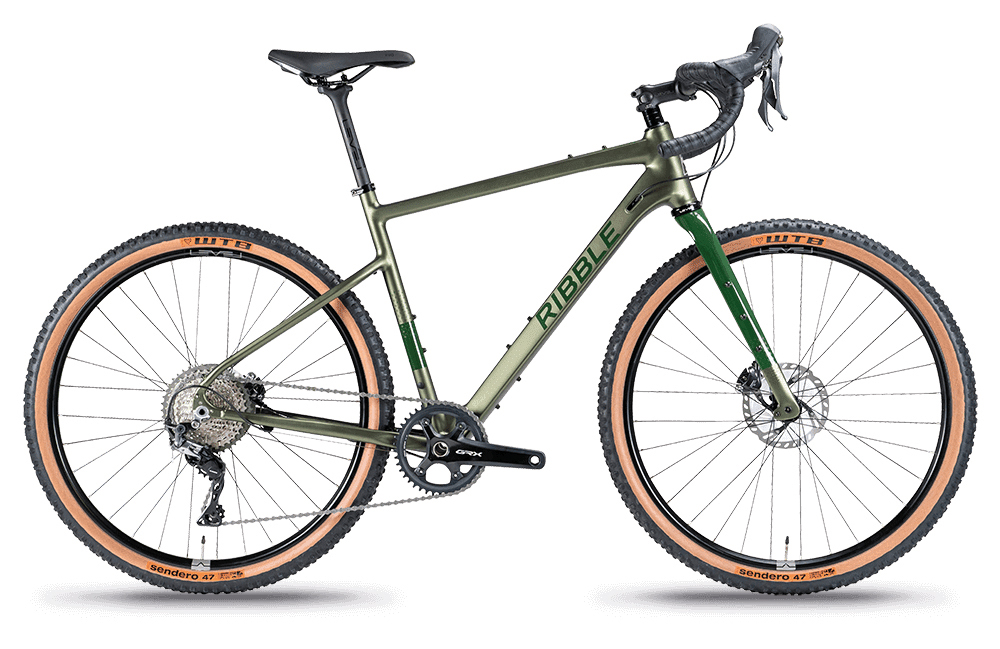
Fantastic value, customisable alloy gravel bike with high-quality Shimano GRX810 11-speed gearing and Mavic Allroad 650B wheels.




